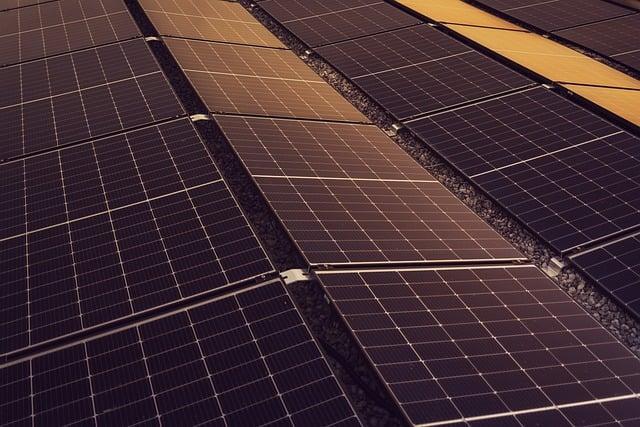In a world where the sun rises every day, casting its generous rays upon our planet, a quiet revolution is taking place in the realm of architecture. Buildings, once static and energy-hungry, are beginning to transform into dynamic entities that not only meet their own energy needs but also contribute positively to the grid. This metamorphosis is driven by the innovative integration of solar technology, ushering in an era of energy-positive building designs. Imagine structures that harmonize with their environment, harnessing the power of sunlight to create sustainable, self-sufficient ecosystems. As we explore this fascinating convergence of architecture and renewable energy, we uncover how the humble photon is reshaping our built environment and redefining the future of urban living.
Harnessing the Sun: Unveiling the Secrets of Energy-Positive Architecture
In the realm of modern architecture, the fusion of cutting-edge technology with sustainable practices is leading to the dawn of energy-positive buildings. These structures, through innovative design and strategic integration of solar technologies, not only meet their energy needs but often generate surplus energy. The concept is revolutionizing how we perceive and interact with our built environment, pushing the boundaries of sustainability and energy efficiency.
- Solar Facades: Seamlessly integrated photovoltaic panels transform building exteriors into sleek, energy-generating surfaces, marrying aesthetics with functionality.
- Smart Energy Management: Advanced systems optimize energy use by predicting demand patterns, thus ensuring efficiency while reducing waste.
- Adaptive Designs: These buildings adapt to climatic conditions, utilizing features like dynamic shading and natural ventilation to maintain comfort and reduce energy consumption.
By embracing these innovative solutions, architects and builders are not only addressing the pressing demands of energy conservation but also paving the way for a more sustainable future. As we continue to explore the vast potential of solar integration, the vision of self-sufficient, energy-positive communities becomes an attainable reality.
Solar Synergy: Integrating Photovoltaics for Maximum Efficiency
To achieve the dream of energy-positive buildings, it’s essential to harness the full potential of photovoltaics. By integrating solar panels into the very fabric of building designs, architects and engineers can create structures that not only consume less energy but also generate more than they use. The key lies in strategic placement and innovative design, ensuring that solar panels capture the maximum amount of sunlight throughout the day.
- Facade Integration: Incorporate solar panels into building facades, transforming walls into power generators.
- Rooftop Optimization: Utilize every inch of rooftop space with photovoltaic tiles and modules designed for high efficiency.
- Smart Shading Solutions: Implement solar panels in shading devices, providing both energy generation and passive cooling.
Through these methods, the synergy between architectural design and solar technology can be fully realized, turning buildings into autonomous energy hubs. By prioritizing these innovations, we can move closer to a future where our structures are not just passive users of resources but active participants in the energy ecosystem.

Design Strategies for Energy Independence: A Guide to Solar Integration
To achieve an energy-positive building design, integrating solar technology is pivotal. By embracing innovative design strategies, architects and builders can harness the sun’s power to not only meet but exceed the energy demands of a building. Key elements of this approach include optimizing the building’s orientation to maximize solar exposure, using energy-efficient materials, and incorporating advanced photovoltaic systems. Crucial considerations involve selecting the right type of solar panels, understanding local climate conditions, and designing for future scalability.
- Passive Solar Design: Leverage the building’s layout to naturally regulate temperature through solar heat gain.
- Building-Integrated Photovoltaics (BIPV): Seamlessly incorporate solar panels into the building’s structure, such as in roofing or façades.
- Smart Energy Management: Implement systems that efficiently manage and store solar energy, adjusting to usage patterns.
- Daylighting: Maximize natural light to reduce the need for artificial lighting, enhancing energy savings.

Sustainable Blueprints: Building a Future with Energy-Positive Designs
In the quest for sustainable living, the integration of solar energy into building designs stands as a beacon of innovation and environmental stewardship. Energy-positive buildings, those that produce more energy than they consume, are revolutionizing the architectural landscape by seamlessly blending functionality with ecological responsibility. These structures harness the power of the sun, converting rooftops into energy-generating surfaces, and setting new benchmarks for eco-friendly construction. By incorporating photovoltaic panels, solar thermal systems, and advanced energy storage solutions, these designs not only reduce carbon footprints but also empower occupants with energy independence.
- Photovoltaic Facades: Aesthetic and functional, these facades transform sunlight into electricity, merging art with utility.
- Passive Solar Design: Maximizes natural light and heat, minimizing the need for artificial energy sources.
- Smart Energy Management: Advanced systems monitor and optimize energy usage, ensuring efficiency.
By embracing these innovations, architects and developers are paving the way for a future where buildings are not just structures, but active participants in the global effort to combat climate change. Through the artful combination of design and technology, energy-positive buildings exemplify the potential of human ingenuity in crafting a sustainable tomorrow.
The Way Forward
As the sun dips below the horizon, casting its final golden hues across the landscape, we are reminded of the endless possibilities that lie within its radiant embrace. Energy-positive building designs with solar integration stand as a testament to human ingenuity and our unwavering commitment to a sustainable future. These architectural marvels not only harness the sun’s power but also redefine the boundaries of what buildings can achieve. As we continue to innovate and refine these designs, we are not merely constructing structures; we are building a legacy of resilience and harmony with nature. The future gleams bright, powered by the sun and guided by our collective vision for a more sustainable world. Let us step boldly into this luminous future, one solar panel at a time.

































